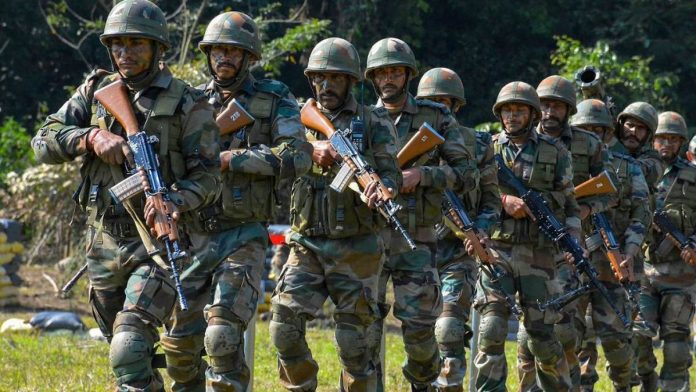
Text Size:
New Delhi: The Indian Army’s Integrated Battle Groups (IBGs), meant to ensure faster punitive and defensive operations, will come into being by early next year after necessary government approvals, top defence sources have said.
The Army is awaiting a report on the recent IBG-styled exercise carried out by the Mountain Strike Corps in Arunachal Pradesh, a development which had upset China according to reports.
The concept of IBGs has also been test-bedded at the 9 Corps at the western border with Pakistan, and the Army is fine-tuning them based on ground feedback.
Also read: The 3 major reforms for Indian Army restructuring and what they will mean for the force
Gaps found in recent experiment
While the Eastern Command is yet to file a report on the IBG experiment in the eastern theatre, sources said the experiment on the western front has brought to light critical gaps in the operations of the IBGs.
“For example, the resources given to IBG for signals were found to be insufficient, particularly because of the mountainous terrains,” a second Army source said.
The signals corps of the Indian Army is responsible for all military communications.
“Then with the animal transport (battalions), the need was felt for better tracks and more load-carrying capacity of mules,” the source added.
Overall, the test emphasised the need for leaner, smaller, more agile and more manoeuvrable forces, the first Army sources quoted above said.
Also read: With ‘Him Vijay’ & Mountain Strike Corps, India can alter the way China border is managed
What are IBGs?
IBGs are self-contained, agile, brigade-sized fighting units, which were proposed in one of four studies initiated by Army chief General Bipin Rawat on the overall restructuring of the force.
They are to replace the current Cold Start Doctrine, which called for defensive corps to carry out shallow cross-border thrusts within 72 hours for limited objectives such as the capture of territory. Gen. Rawat acknowledged the existence of the doctrine for the first time in January 2017.
The IBGs are to perform both offensive roles, involving cross-border operations, and defensive roles to withstand an enemy attack.
Each IBG will be headed by a major general. The integrated units for the border will be all-encompassing, with artillery, armoured, combat engineers and signal units.
Resources for the IBGs would depend on ‘Threat, Terrain and Task’, and should be able to mobilise in 12 to 48 hours based on where they are located.
The composition of every IBG would differ on the basis of the terrain where it is located — an IBG operating in a desert needs to be constituted differently from one operating in the mountains.
Also read: General Rawat is front-runner for CDS but all he talks about is cosmetic changes in military
ThePrint is now on Telegram. For the best reports & opinion on politics, governance and more, subscribe to ThePrint on Telegram.
(This story has not been edited by IndoPakDefscan staff and is auto-generated from a syndicated feed.)
Source Link: http://bit.ly/34rjgMU
No comments:
Post a Comment